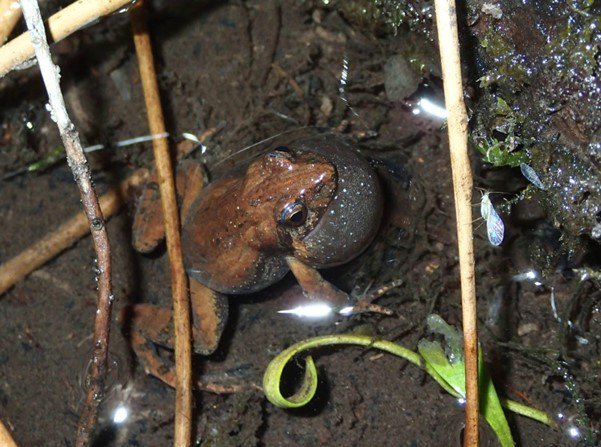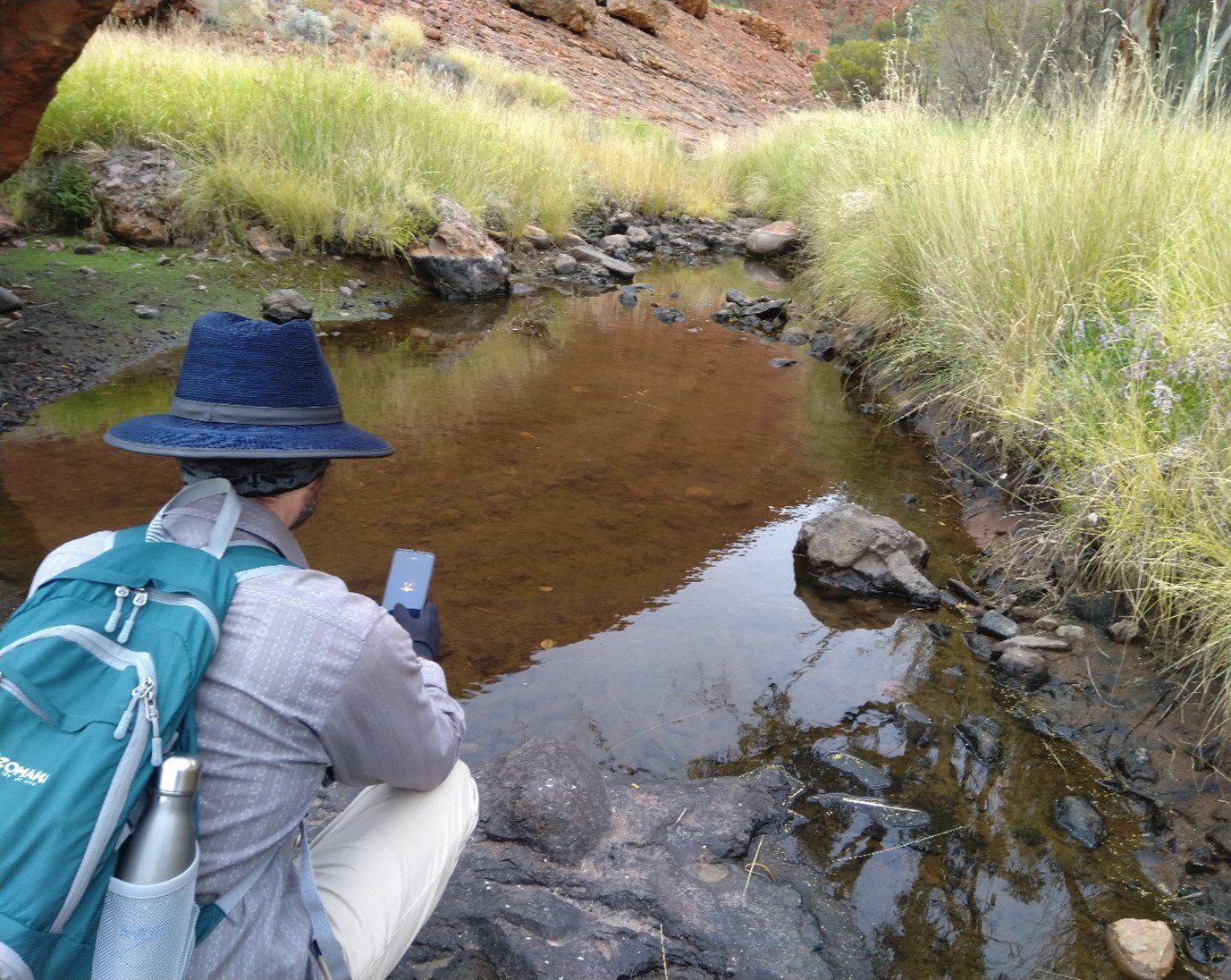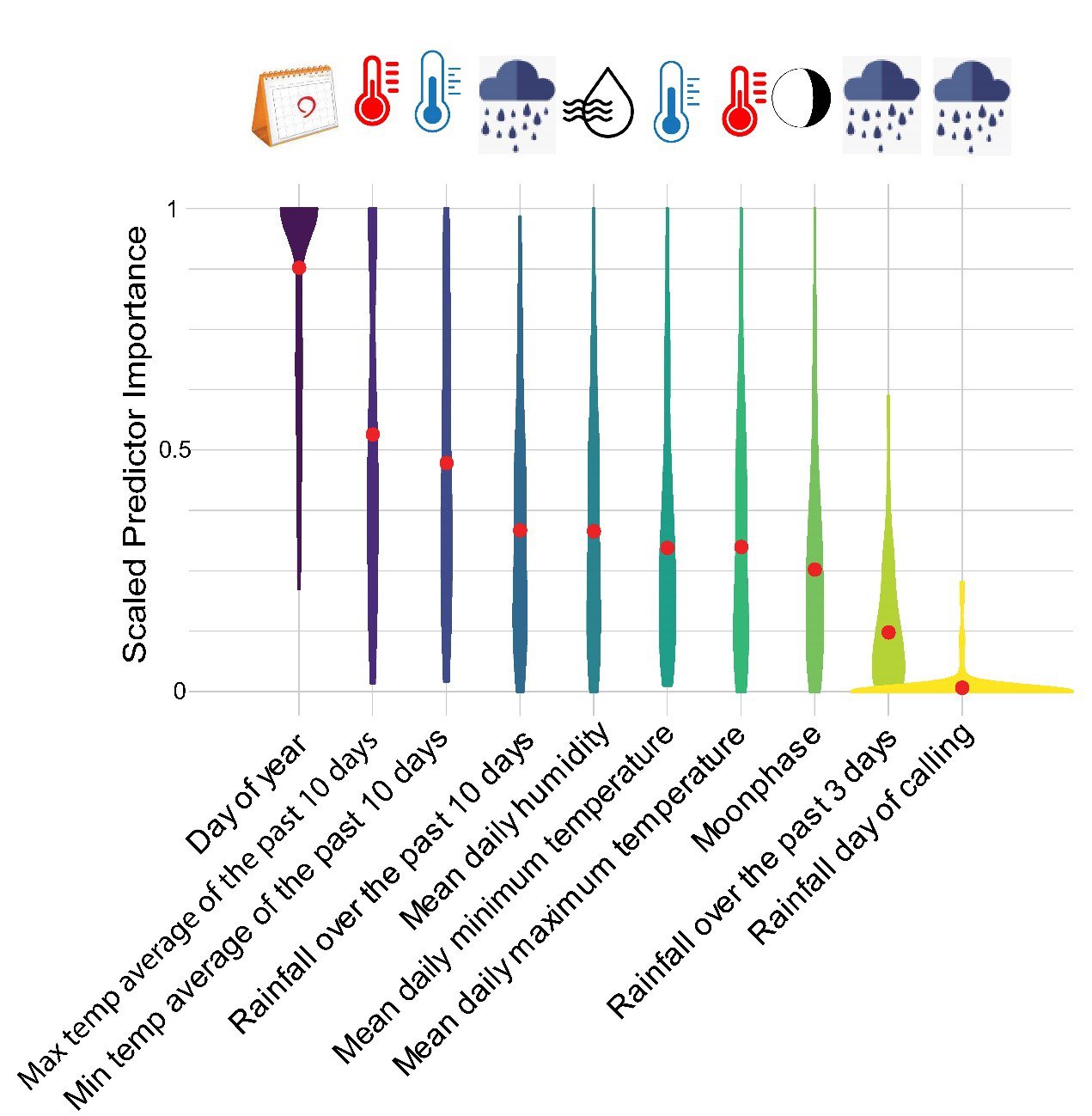It’s a date: Citizen science data reveals what triggers frogs to breed
How do frogs know when to breed? Frogs tune into their environment, which holds important clues as to when the conditions are suitable for breeding. But what clues exactly?
Many frog populations are declining across Australia and across the world. Frogs, like much biodiversity, are facing a multitude of threats such as habitat loss, pollution, fungal and viral disease pandemics, climate change, fires, droughts, and floods. We desperately need more information on frog populations – specifically, where they are and how they are changing over time.
Often the best way to survey for frogs is to listen for their call during the breeding season. The results of call surveys are where we get most of our understanding of species population trends over time. Knowing what cues are important to frog calling is vital for scientists, both in planning when to look for frogs (for example, monitoring a threatened population) and for after the surveys are done (interpreting what your results mean for that species, compared to historical records). So, it is important to identify what the best weather and time of year is to survey for a species – pick the wrong conditions, and chances are you won’t find them.

© Australian Museum
To answer some of those pressing questions affecting frog breeding and survival, we need a substantial amount of data from everywhere frogs live – an almost insurmountable task. With traditional science, we might only know how frogs in one national park respond to the conditions there, over a few months. Now, with the help of people all over Australia contributing to the national citizen science project FrogID, we have records of frogs every day of the year and in hundreds of unique places across the continent! This data allows a more comprehensive look at what is important for frogs all over Australia, when it comes to breeding.
In our recent research, we examined how environmental factors influenced calling over a three-year period, using more than 150,000 frog records from 100 species. Combined with weather data, we looked at a how cues (like day-of year, daily temperature, recent trends in temperature, humidity, rainfall, and recent accumulation of rainfall) influence the calling behaviour of these frog species at a macro-scale (10km2 grid cells).

© Maureen Thompson
We found a strong seasonal signal, with day of year most strongly related to calling in 67 out of our 100 species. This is perhaps not surprising – frogs, like most animals, tend to breed during specific times of the year. However, what was surprising was this overwhelming strength of time of year, being more connected to frog calling than temperature or even rainfall! In other words, more than daily temperature and rainfall, frogs use the seasons, including factors like the sunrise and sunset time and recent weather patterns, to know it’s time to start looking for a mate. And since we already know frogs tend to have a breeding season, we also looked at data just within their known breeding seasons, to see what was important during that pivotal time. We found similar patterns, where weather patterns over the past 10 days were more influential than daily weather variables.

© Maureen Thompson
With the continued help of citizen scientists, we are better able to not just get a baseline understanding of what frogs need to breed, but to understand the changes over time of frog breeding and survival. This helps us plan and develop effective conservation strategies. Indeed, citizen science data are increasingly being used to document changes in the timing of important events, like migration in birds, and hatching time for butterflies, and watch out for mismatches in things like arrival at breeding sites and food availability.
Understanding how meteorological conditions influence important events in the life, such as breeding, will be increasingly important considering the rapid changes in environmental conditions and stability throughout the world, and how important breeding is to species survival. Since historically coupled signals, like rainfall and temperature are uncoupling in some parts of the world, what does this mean for frog breeding behaviour and successful reproduction? Are their offspring going to survive as well as they have over evolutionary time? And, if frogs are relying on their environment to tell them when to breed, what happens if the environment changes? Gain some more insight into this issue when you check out more recent research using FrogID Data!
Maureen Thompson, Technical Officer, Herpetology & PhD Candidate Australian Museum Research Institute & UNSW Sydney.
More information:
Thompson, M.M., Poore, A.G.B., Rowley, J.J.L., & Callaghan, C.T. (2022) Citizen Science reveals meteorological determinants of frog calling at a continental scale. Diversity and Distributions. DOI: 10.1111/ddi.13634
Acknowledgements:
We would like to thank the Citizen Science Grants of the Australian Government and the Impact Grants program of IBM Australia for providing funding and resources to help build the FrogID App; the generous donors who have provided funding for the project including the Vonwiller Foundation; the Museum and Art Gallery of the Northern Territory, Museums Victoria, Queensland Museum, South Australian Museum, Tasmanian Museum and Art Gallery, and Western Australian Museum as FrogID partner museums; the many Australian Museum staff and volunteers who make up the FrogID team; UNSW for the University International Post Graduate Award, and, most importantly, the thousands of citizen scientists across Australia who have volunteered their time to record frogs.

